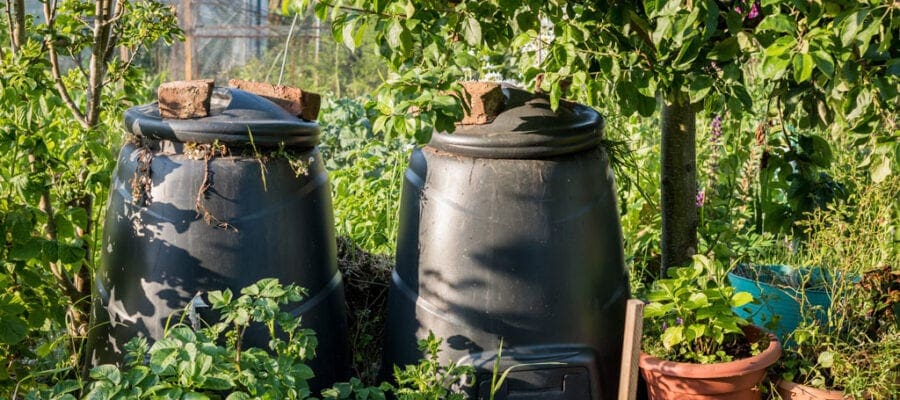
Having good soil is the foundation to producing successful crops. You can get a feel for what your soil type is like by squeezing a handful. Does it stay together, moulded in a solid lump, or is it crumbly?
The first type may mean it is aclay soil and this can mean aheavy soil that is slow to warm up in spring and difficult to cultivate if it is too wet, sticking to your fork and spade. A very crumbly sandy soil also has its drawbacks. It can be free draining and dries out quickly.
When it comes to improving soil structure there is no short cut – it may take afew years to get it into shape but this does not mean you can’t start growing something in it straight away. The best treatment for apoor soil is to apply plenty of organic matter. This can be in the form of home-made compost, leafmould, farmyard manure, mushroom compost or green manure.
The incorporation of organic matter is traditionally done annually and often in the autumn when the ground is being prepared for the next growing season. The organic matter can be scattered over the surface and incorporated as you dig. It can also be applied in spring but dig it in well before sowing.
Making your own compost
Homemade compost is wonderful stuff to put on your veg beds. It will improve the soil enormously and the by-product of growing veg will be waste plant material and weeds, so it makes sense to collect it and then return it to the soil when it has rotted down.
Compost bins are available from many local authorities now or you can buy wooden sided bins or even rotating bins. These have the benefit of allowing you to mix the material – which is the best way to aerate the compost and help break it down more quickly.
In an ideal world you would have two or three compost bins next to each other and occasionally turn one heap into an empty compost bin to mix up the layers and aerate. This has the same effect as a rotating compost bin and gets air into the layers to allow the bacteria to work more efficiently and decompose the material. A heap that has too much of any one material can sometimes turn into a smelly mess that does not break down well.
This is not ideal but do not be disheartened because even this could be reinvigorated by aerating or simply digging it into the soil to continue to break down after application. To make the very best compost you need half brown waste and half green waste mixed thoroughly.

Brown waste
- Woody prunings (thin stems)
- Tougher stems of veg such as beans or brassicas
- Cardboard (best shredded or broken up into small bits)
- Shredded paper
- Sawdust
Green waste
- Soft annual weeds
- Nettles
- Soft green prunings
- Grass cuttings
- Kitchen veg waste
It is best not to use a thick layer of any one of the above materials and, if you can, mix the layers up a bit to improve composting. Once the compost has broken down to a dark brown material it is perfect for applying to your vegetable beds, even if it still has some coarse material in it. Simply scatter it across the surface and either allow the worms to incorporate it for you or help nature abit by digging in.
Do not compost:
- Cooked food
- Meat products
- Glossy magazines or plastic coated cardboard
- Dairy products (Egg shells are fine)
How much to apply?

You can use as much garden compost or farmyard manure as you can handle. In the case of manure, it can be a problem being bulky and heavy and having to barrow it from a delivered heap to your plot.
A good 10-15cm (4-6in) of manure or compost is ideal but less is fine if that is all you have. If you have good soil then you may not need to apply it every year but perhaps every other. If your soil is poor and you are not getting good results then aim to add annually.
Using green manures
If it is impractical for you to get hold of farmyard manure, or even make your own compost, you can easily improve your soil by growing a green manure crop. This is a special crop that is sown over any bare patches of ground and dug back into the soil before it gets too big.
Hardy green manures can be sown in late summer or early autumn when you often have bare areas on your veg patch. Choose green manures such as grazing rye, winter tares and field beans. The latter is a legume (pea family) and produces nitrogen fixing nodules on its roots that will help to increase nitrogen levels in the soil. The small seeded manures can be simply scattered over the soil surface and gently raked in. The field beans may be best sown in rows.
In late winter or early spring, before they get too big and woody, simply dig over the ground incorporating all the crop. The material will break down in the soil, improving the structure, helping to retain moisture and providing vital nutrients. Green manure seeds are sold by some big garden centres or check out Kings Seeds or the Organic Gardening Catalogue websites.











